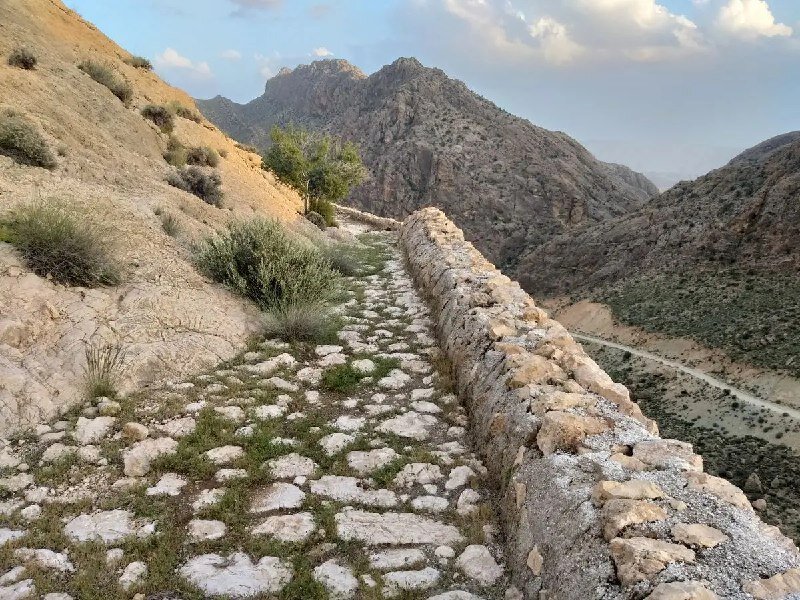Storm shows another part of Fahraj Spice Road

TEHRAN—Storm showed another part of Fahraj Spice Road. The Spice Road was one of Iran’s first ancient routes for trading spice to various parts of the world. It was connected to Silk Road. Some parts of it were exposed in the late 1990s due to a severe storm.
Some archeologists attribute the history of this paved road to the Achaemenid era, ILNA wrote.
The importance of the emergence of the Spice Road in Fahraj was such that it drew Professor Shahriar Adl, a famous Iranian archaeologist, to the region.
During his visit to Fahraj ancient sites, he declared that Fahraj is the oldest campus of archaeology in Iran, and numerous ancient artifacts, even artifacts from the Paleolithic and Paleolithic eras, have been observed in this city.
Hamid Vahidzadeh, caretaker of Fahraj Cultural Heritage Department in Kerman said that due to severe storms, the new part of Spice Road has been observed near Mil-e Naderi (Naderi Tower) which dates back to 1,000 years ago.
Fahraj in Kerman province has 358 historical monuments and ancient sites, he said, adding that Spice Road is the most important historical site of Fahraj.
He said that for many years, many experts and archaeologists had been searching for the Spice Road in Iran, and the severe storms of Fahraj caused this route to be unveiled. In the first phase, when the storm exposed part of this road, the Spice Road was registered as a national heritage and its archaeological studies began.
Vahidzadeh added that funds are to be allocated for the restoration and placement of tourist routes of this work, which some archaeologists consider to be an Achaemenid road.
He explained that Naderi tower is the only desert lantern in Iran that has been registered nationally.
The Spice Road in Fahraj emerged from under sands of the desert in the late 1990s due to a severe storm, and now 40 kilometers of it have been identified. In the past month, another part of the ancient Spice Road in Fahraj emerged from under the ground again due to a storm.
According to Vahidzadeh, 70 percent of the historical monuments in this county, including ancient sites and historical monuments, have emerged from under the desert sands and been identified only due to severe storms.
Since Fahraj County is newly established and its population is not such that this area can become a city, few funds are allocated to it, he said. “Despite having more than 300 historical monuments, the cultural heritage sector receives less than 10 billion rials ($11,111). With this amount, we do not know whether we should focus on the tourism sector or restore historical monuments. While special attention should be paid to places like Fahraj County with its rich heritage in allocating funds.”
Vahidzadeh announced: "The only thing that helped the historical monuments of Fahraj was the efforts of the Kerman Cultural Heritage Department to nationally register the identified historical monuments of this county at the expense of the department itself, which was able to protect a large part of these monuments from the risk of destruction and damage due to the national registration."
Pointing to arrival of foreign tourists to Fahraj following release of news regarding finding Spice Road, he said Italians were the first foreigners who came to Fahraj and visited this ancient site. One of them was a merchant who had traveled to Fahraj to visit Spice Road, he added.
Because the Spice Road is the highway of ancient Iranian roads that connected to the Silk Road, and for foreign tourists who came to Fahraj, visiting the ancient routes was of great importance, and they announced that the Spice Road was more important than the Silk Road, and its architectural structure is also very different from the Silk Road.
The only difference between the Spice Road of Iran and the Silk Road is the provision of roadside parking lots for the safe passage of riders and carriages that traveled on this narrow-paved road. In addition, these parking lots or rest areas were located exactly every 250 meters, which gave great interest to the structure of the Spice Road in ancient times. This difference does not exist on the Silk Road route.
KD
